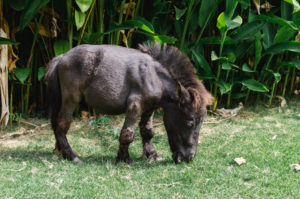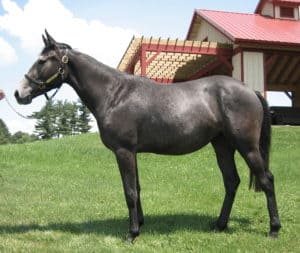
UK Graduate Student Spotlight: Parul Suri, MS
Parul Suri’s research is mainly focused on Sarcocystis neurona, a parasite that can cause EPM in horses.

Parul Suri’s research is mainly focused on Sarcocystis neurona, a parasite that can cause EPM in horses.

Researchers identified found mutations in the gene aggrecan—the major structural protein of cartilage associated with dwarfism in Miniature Horses.

By re-analyzing DNA from a Thoroughbred mare named Twilight using updated equipment, scientists corrected thousands of errors in the original sequence released in 2009.

Shavahn Loux has been involved in a wide range of equine reproduction projects, particularly focusing on monitoring gestational health using bioinformatic tools.

Phosphorus is the second most abundant mineral in the horse’s body; about 80% of it is found in horses’ teeth and skeleton.

Cost-sharing programs can cover 50% to 90% of the actual costs, allowing horse owners to invest in farm improvements that might otherwise be out of their budget.

Drs. Allen Page and David Horohov have studied inflammatory markers in racehorses since 2012. This was their first opportunity to measure those markers in nonracehorses.

Alisa Herbst is studying inflamm-aging (chronic low-grade inflammation) in senior horses.

Young growing horses, late-gestation broodmares, and lactating mares have higher calcium requirements than the average mature horse.

Fall is prime time to invest in pastures to protect them before and throughout the winter to ensure good grazing in the spring.

Stanley’s research interests include drug testing methods to detect biopharmaceuticals, natural products, and designer drugs; developing new anti-doping approaches; and establishing an equine biological passport project.

Drs. Thomas Divers, the late Steeve Giguère, and Dickson Varner will be inducted into the Equine Research Hall of Fame on Oct. 31.

Dini hopes his current research projects will help improve the understanding of equine placental development.

Early signs of fluorine toxicosis in horses can include unthriftiness, standing with an arched back, rough hair coats, bone thickening, stiffness, and lameness.

A Kentucky Thoroughbred farm is reaping the benefits of healthier mares and foals after making horse pasture renovations over the past year with guidance from University of Kentucky personnel.

Learn how researchers are improving footing at two major competition venues in the United States, including the one that will host the 2018 World Equestrian Games next month.
Stay on top of the most recent Horse Health news with